2023 British Pavilion offers diverse and dynamic installation at the 2023 Venice Biennale
The 2023 British Pavilion, 'Dancing Before the Moon,' contributes a triumphant blend of ritual, music, and cross-cultural pollination to the biennale’s ‘laboratory of the future’
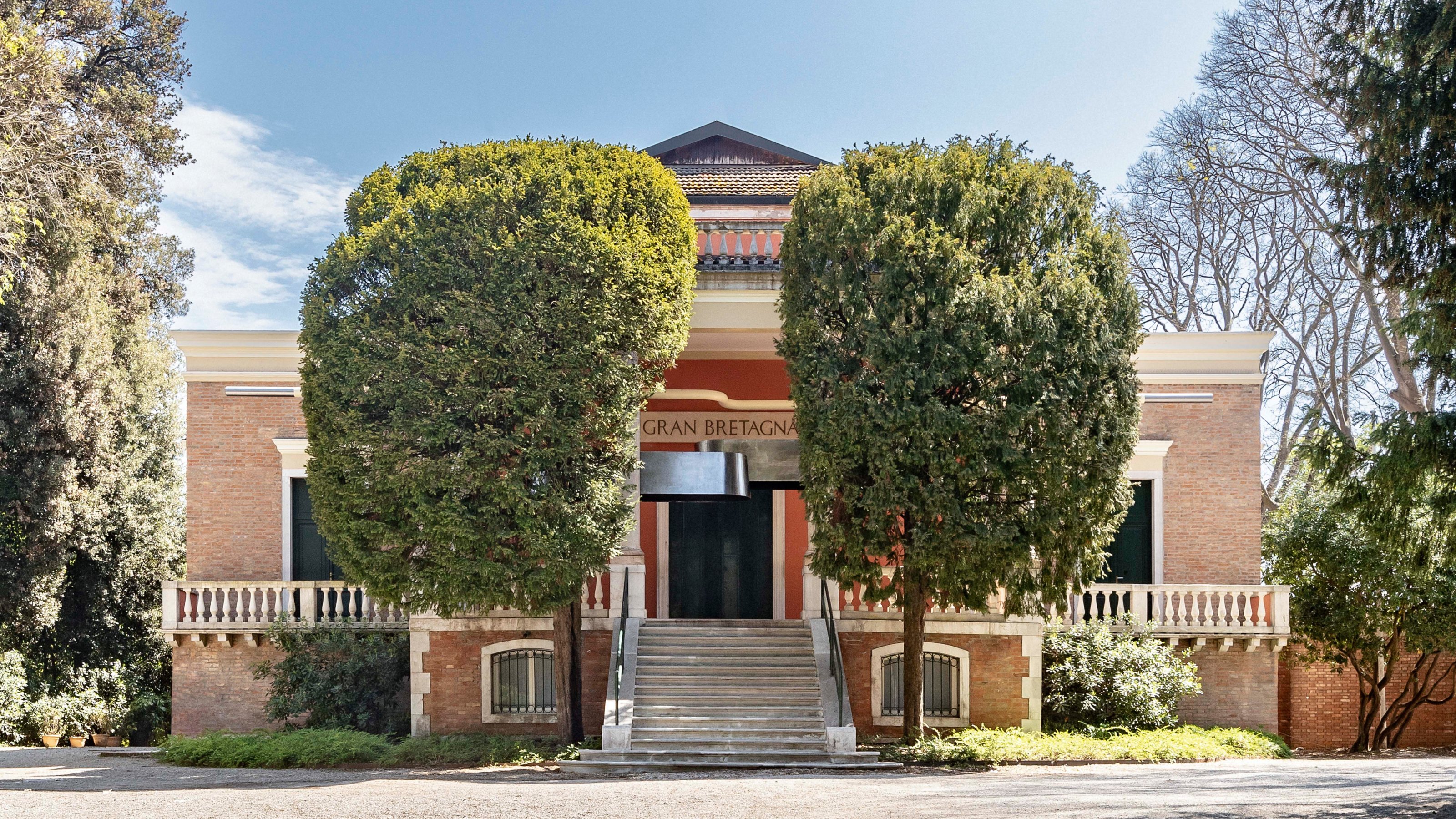
At the newly opened Venice Architecture Biennale, the 2023 British Pavilion’s exhibition, 'Dancing Before the Moon,' stood out for the clarity and directness of its message.
Under the curatorship of Lesley Lokko, the 18th international architecture exhibition pushed hard against the prevailing orthodoxy of architecture culture, eschewing rosters of starchitects and glossily rendered megaprojects in favour of a more considered examination of the systems and structures, both physical and societal, that underpin the modern world.
Within this context, the pavilion's exhibition, 'Dancing Before the Moon,' stood out for the clarity and directness of its message, exploring the way in which the overlooked rituals and practices of a multicultural island nation have become deeply embedded in the fabric of day-to-day life in the UK.

Meneesha Kellay, Joseph Henry, Jayden Ali, and Sumitra Upham, the British Pavilion curatorial team, with the British Council's Sevra Davis
2023 British Pavilion: 'Dancing Before The Moon'
Curated by Meneesha Kellay, Joseph Henry, Jayden Ali, and Sumitra Upham, the project was commissioned by a British Council team led by Sevra Davis. ‘I was quite unequivocal about challenging what we think about architecture,’ Davis recalls, explaining how many of the responses to the brief made this shift. The chosen curation team, however, went one step further, promising to engage with the physical fabric and form of the building.
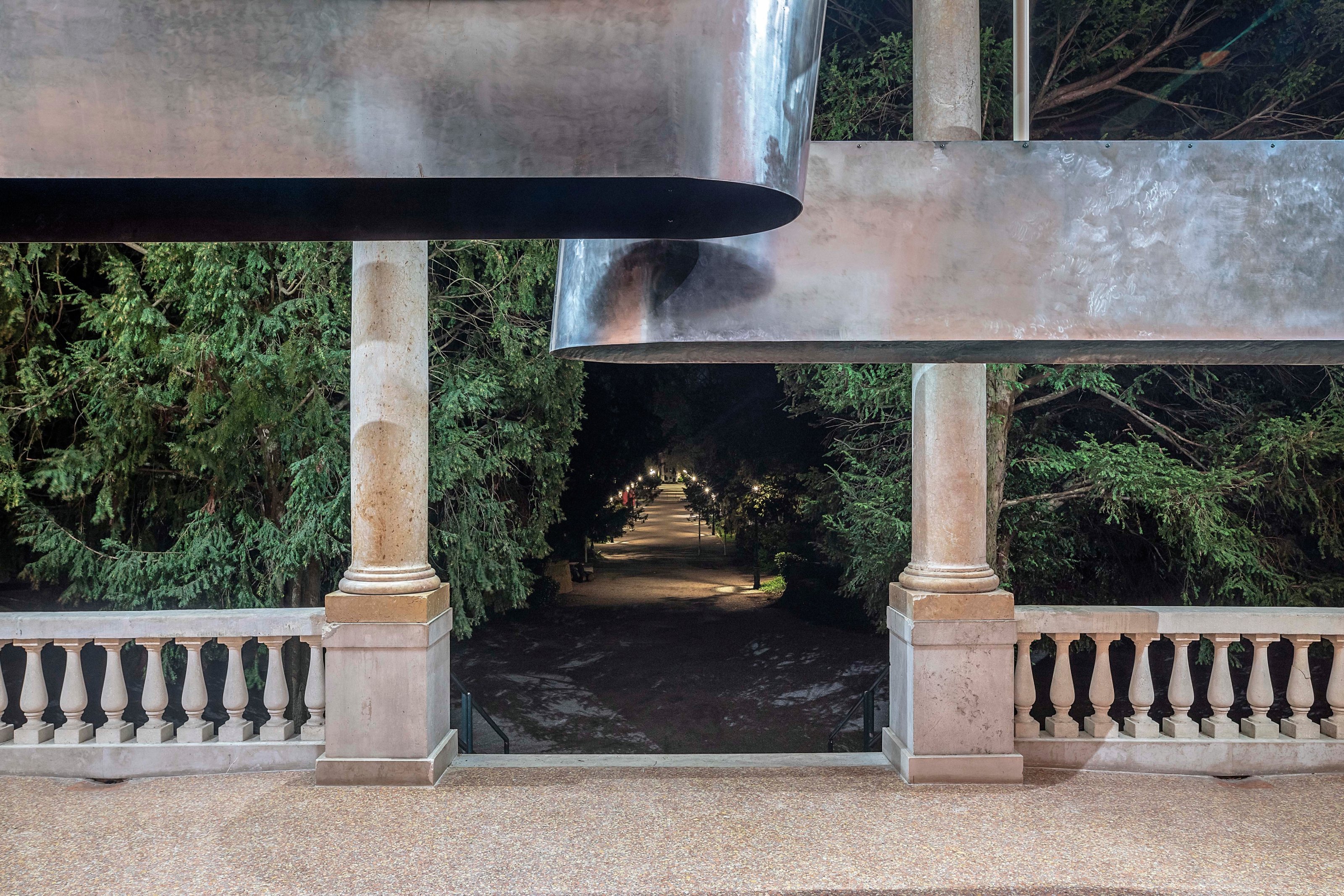
Jayden Ali - Thunder and Şimşek at the British Pavilion
‘Dancing Before the Moon’ comes from a quote from the American writer James Baldwin: ‘There is a reason, after all, that some people wish to colonize the moon, and others dance before it as an ancient friend.’ The curators assembled a group of practitioners to explore the way in which imported cultural practices adapt and evolve into integral components of British life, even as they sometimes occupied unfriendly and hostile spaces.
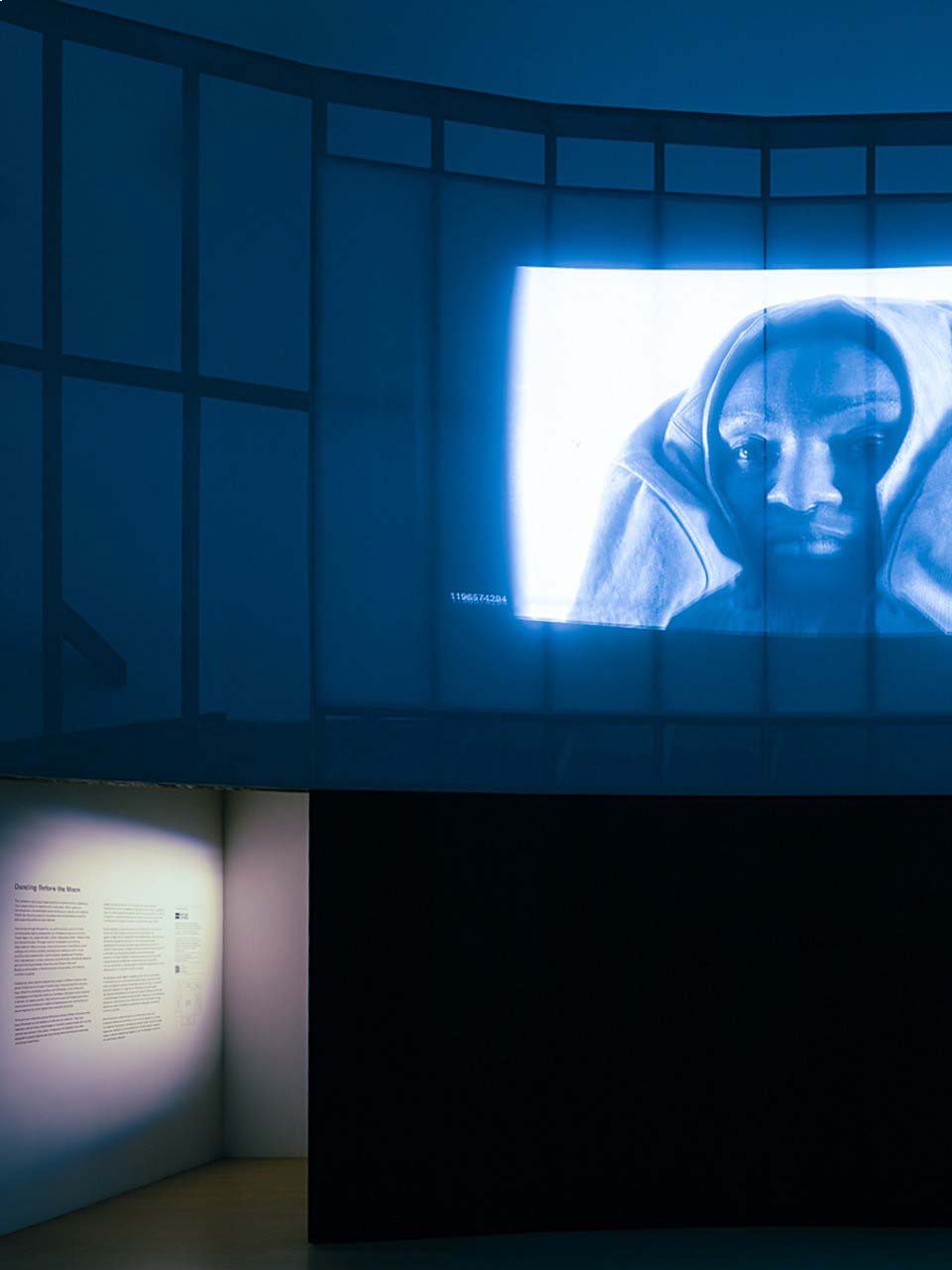
From the Dancing Before the Moon film at the British Pavilion
The neo-classical British Pavilion was completed in 1909 to designs by Edwin Alfred Rickards of Lanchester, Stewart and Rickards, a practice that designed several buildings in British colonies. The various artistic interventions are laden with multiple meanings; not only are they very literally occupying the corridors of power, but they are deliberately large and imposing to make an impact on the space.

Jayden Ali - Thunder and Şimşek at the British Pavilion
‘Scale was really important from the beginning,’ says Jayden Ali. As well as his curatorial role, the London-based artist and architect is responsible for the vast giant steel pan-inspired sculpture, 'Thunder and Şimşek,' that hangs inside the entrance portico. Ali describes how these objects ‘challenge’ the building, while at the same time they are held up by a clever system of steel braces that in turn uses the columns for support; a metaphor of the support and intersection that his own Trinidadian and Cypriot heritage has with British culture.
Receive our daily digest of inspiration, escapism and design stories from around the world direct to your inbox.
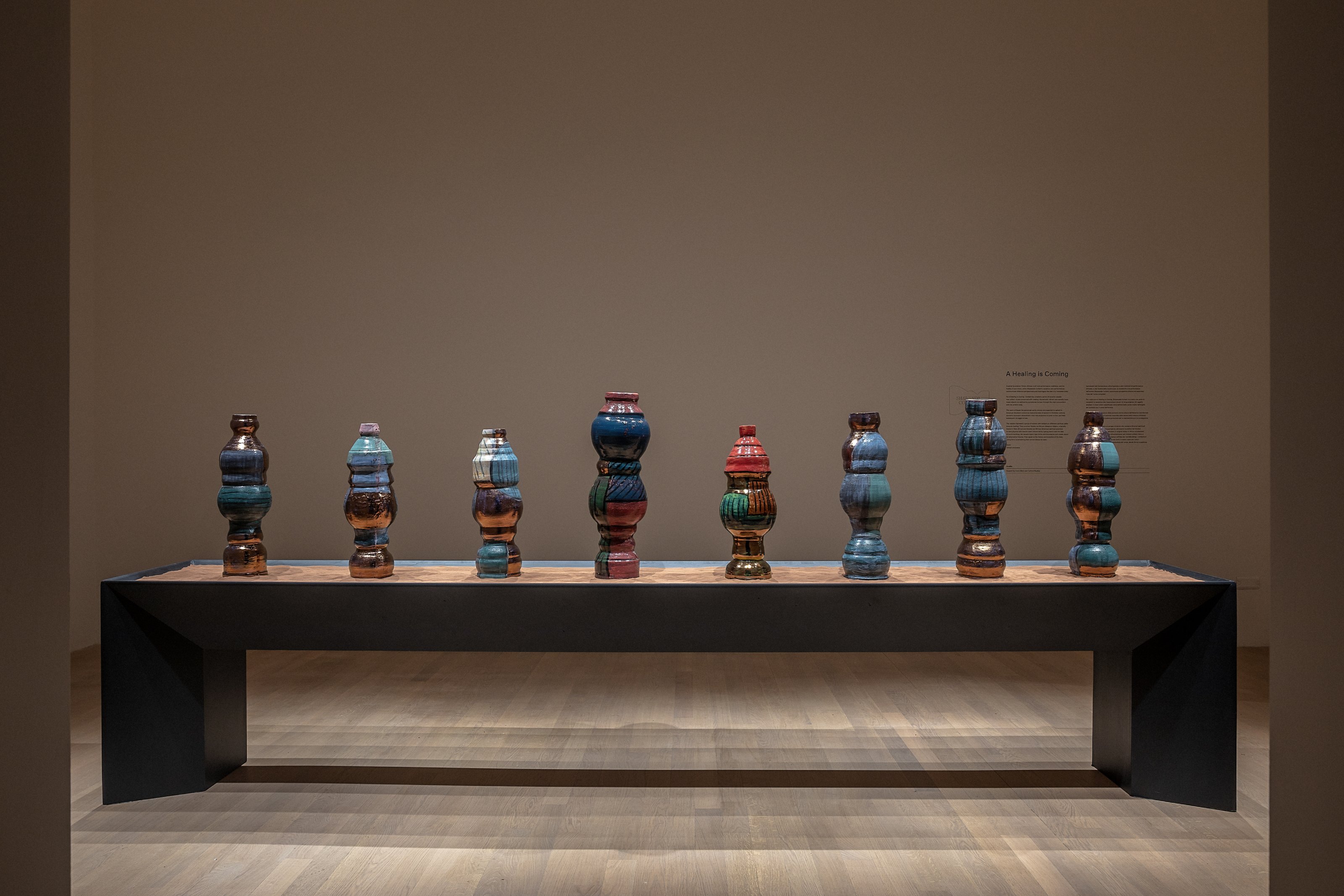
Shawanda Corbett - A healing is coming at the British Pavilion
The main entrance hall hosts the specially commissioned film, a travelogue around the UK, exploring the various rituals that have become part of British life, from dance to car culture, religion to carnival. The soundtrack permeates through the galleries, starting on the left with Shawanda Corbett’s ‘A Healing is Coming’, eight ceramic vessels that celebrate the variety, imperfections and beauty of the female form and rituals around healing. Symbolising eight imagined women embarking on different spiritual healing journeys, the vessels imbued with character and magic.
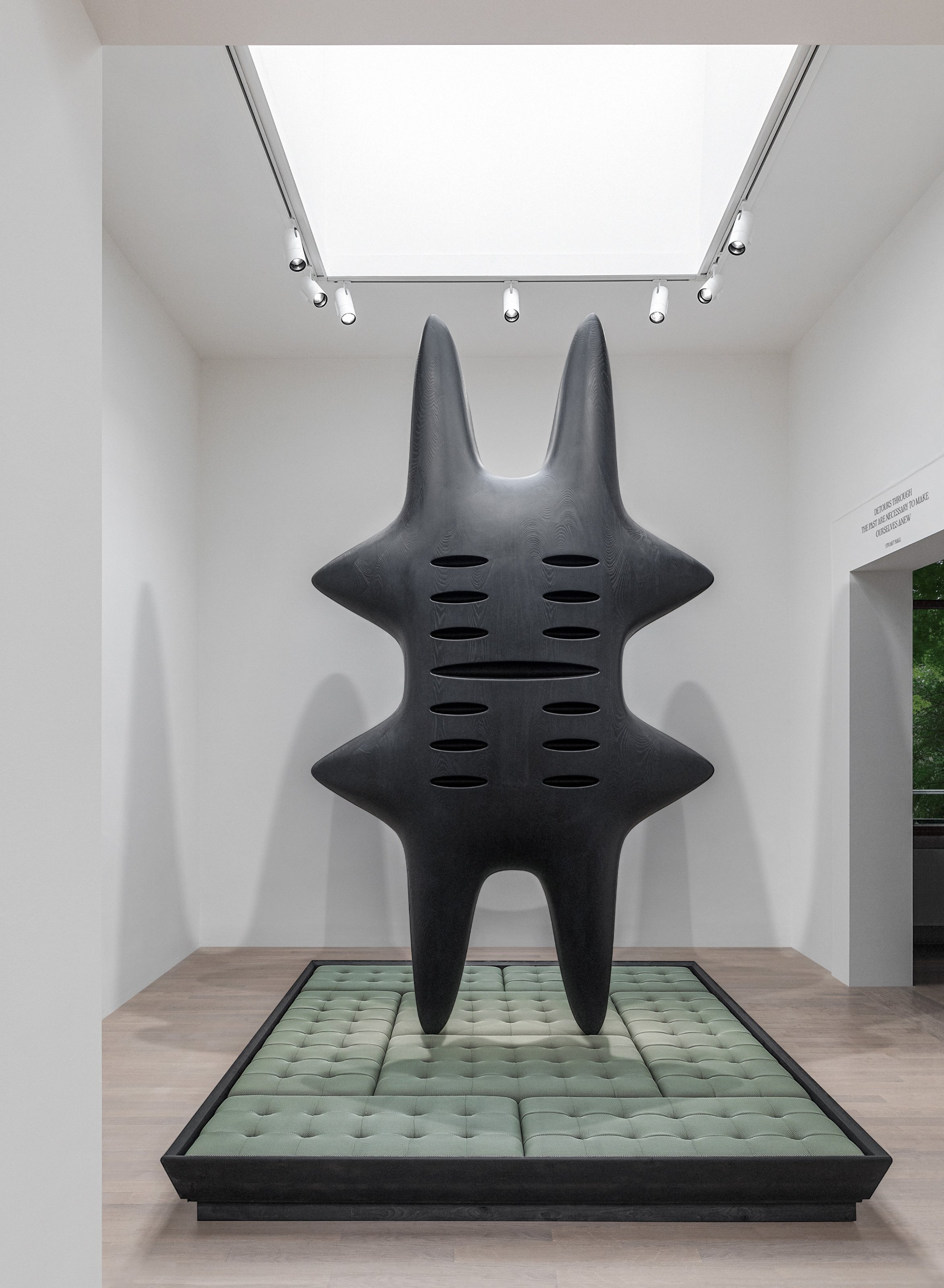
Mac Collins – Runout, at the British Pavilion
Mac Collins’s ‘Runout’ greets the visitor in the next room. This vast wooden assemblage is essentially a giant domino, perched atop an upholstered plinth that evokes the social clubs and pubs where this ever-popular Jamaican game is played. ‘Runout’ is one of many domino games, especially popular in the Midlands, near where the Nottingham-born designer grew up. The sculpture itself is character, part imp, part friendly alien, beamed down into this austere environment and impossible to ignore.
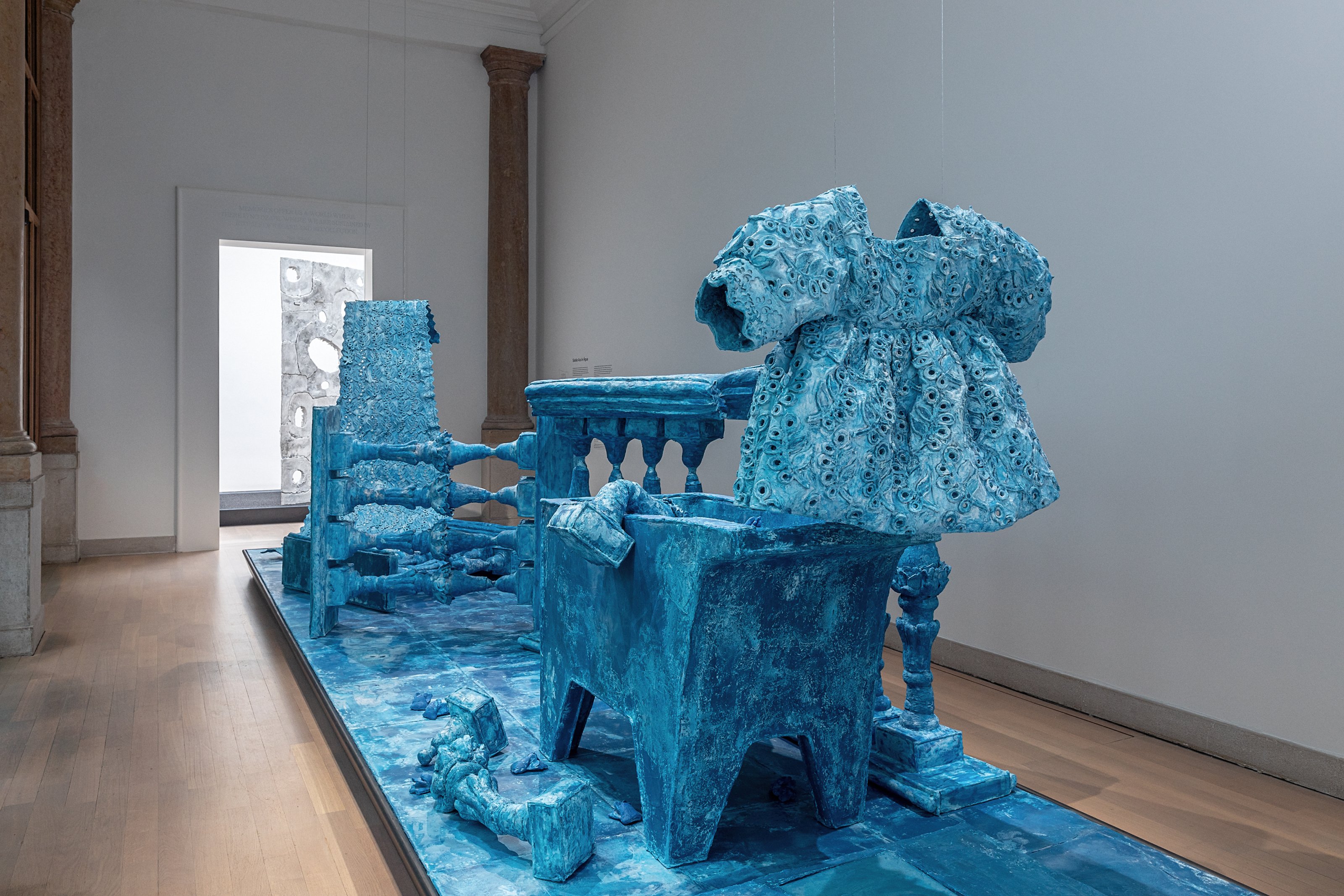
Sandra Poulson, Sãbao Azul e Água, at the British Pavilion
Although none of the installations encroach on one another, the tall doors and openings ensure they all have a visual connection. Sandra Poulson’s Sabão Azul e Água’, a striking blue assemblage of objects, is simultaneously diaphanous and weighty. Poulson has used fabric and textile waste to build her installation, fashioning a parade of stone balustrades, a cascade of lace, a concrete washing tank and a traditional Angolan costume. All are coated in blue soap, Sabão Azul, a symbol of cleanliness but also frequently used to smuggle embedded diamonds out of the country.

Madhav Kidao, Bardo, at the British Pavilion
‘Bardo’, by Madhav Kidao takes the architect’s ‘Between Forests and Skies’ pavilion, installed at the V&A in 2021, melts its down and creates another form altogether. Inspired by his own heritage of Hindu and Buddhist philosophies, Kidao has transformed the molten aluminium into a pock-marked surface, scoured and shaped by the sand it was cast in. Bardos are transitional states that exist between birth, life and death in Buddhist philosophy, and this piece represents a moment of change, as opposed to the finality of traditional Western perceptions of death.

Yussef Agbo-Ola, Muluku 6 Bone Temple at the British Pavilion
Yussef Agbo-Ola’s ‘Muluku: 6 Bone Temple’, dominates the final room in the sequence. Agbo-Ola, founder of Olaniyi Studio, divides his time between London and the Amazon rainforest in French Guiana. An inverted tent of stretched organic cotton, tethered to a frame and the building itself, this ‘temple’ of woven fabric evokes the nomadic animal skin structures of the Cherokee culture, and traditional Yoruba architecture.

Yussef Agbo-Ola, Muluku 6 Bone Temple at the British Pavilion
Dancing Before the Moon represents ‘layers and layers of history,’ according to Ali, ‘it’s not about erasure, it’s about depth,’ he adds. ‘My work is about occupation. It’s a reflection of Britain – all of these people who live and work here. All of these rituals and customs are a part of British life.’ One of Lokko’s guiding principles for the Biennale is that ‘dominant voices [have] ignored huge swathes of humanity.’ 'Dancing Before the Moon' successfully occupies, transforms and engages with space, mirroring society’s ongoing transformation and its effect on art, design and architecture.
Dancing Before the Moon is at the British Pavilion, La Biennale Architettura 2023 is open in Venice until Sunday 26 November 2023, LaBiennale.org
Jonathan Bell has written for Wallpaper* magazine since 1999, covering everything from architecture and transport design to books, tech and graphic design. He is now the magazine’s Transport and Technology Editor. Jonathan has written and edited 15 books, including Concept Car Design, 21st Century House, and The New Modern House. He is also the host of Wallpaper’s first podcast.
-
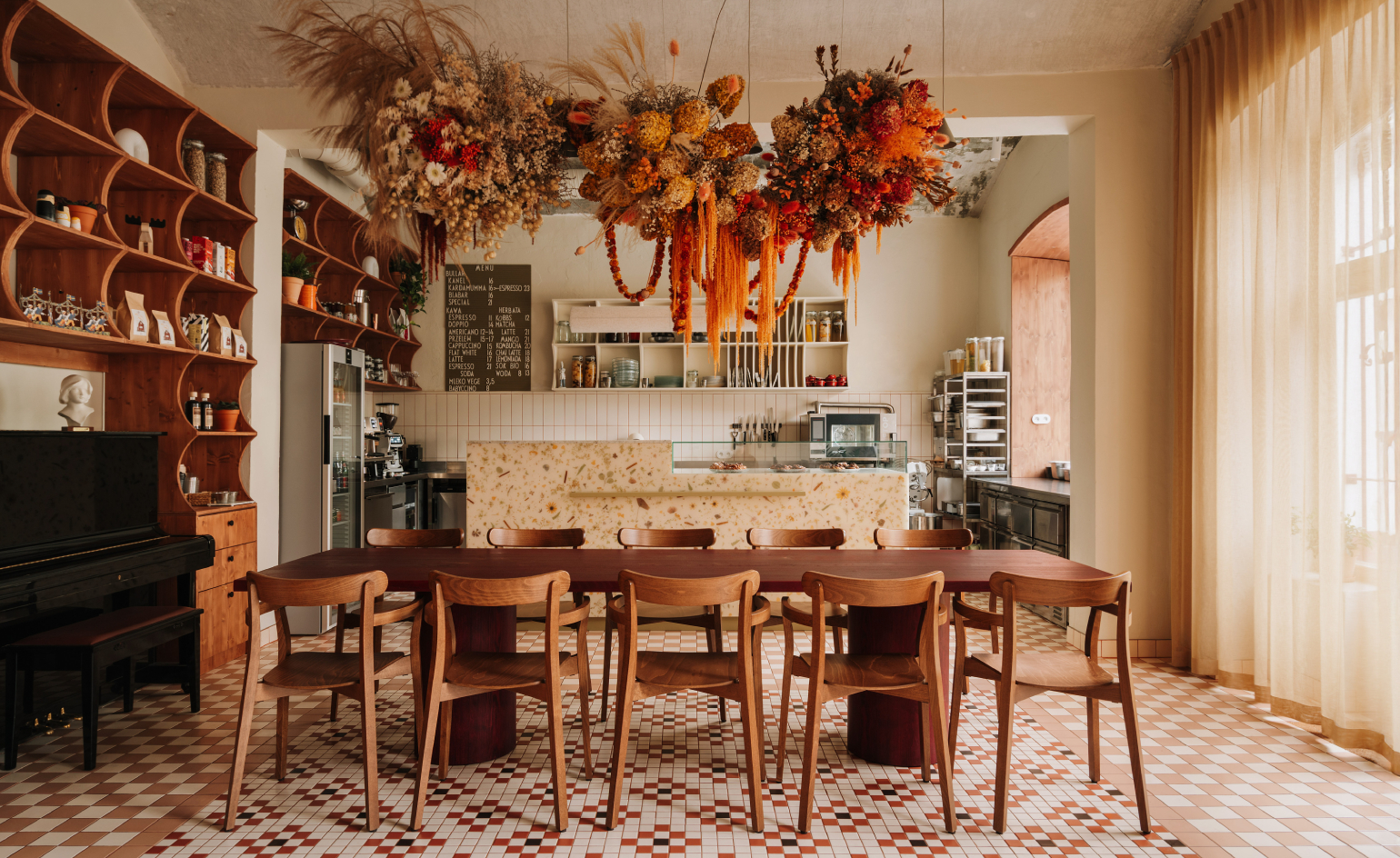 Homespun pleasures are the order of the day at this warm Kraków restaurant
Homespun pleasures are the order of the day at this warm Kraków restaurantLocated in the Kazimierz district, Dala Restaurang emerges as a space where homely character meets a love for nature and the simplicity of life
-
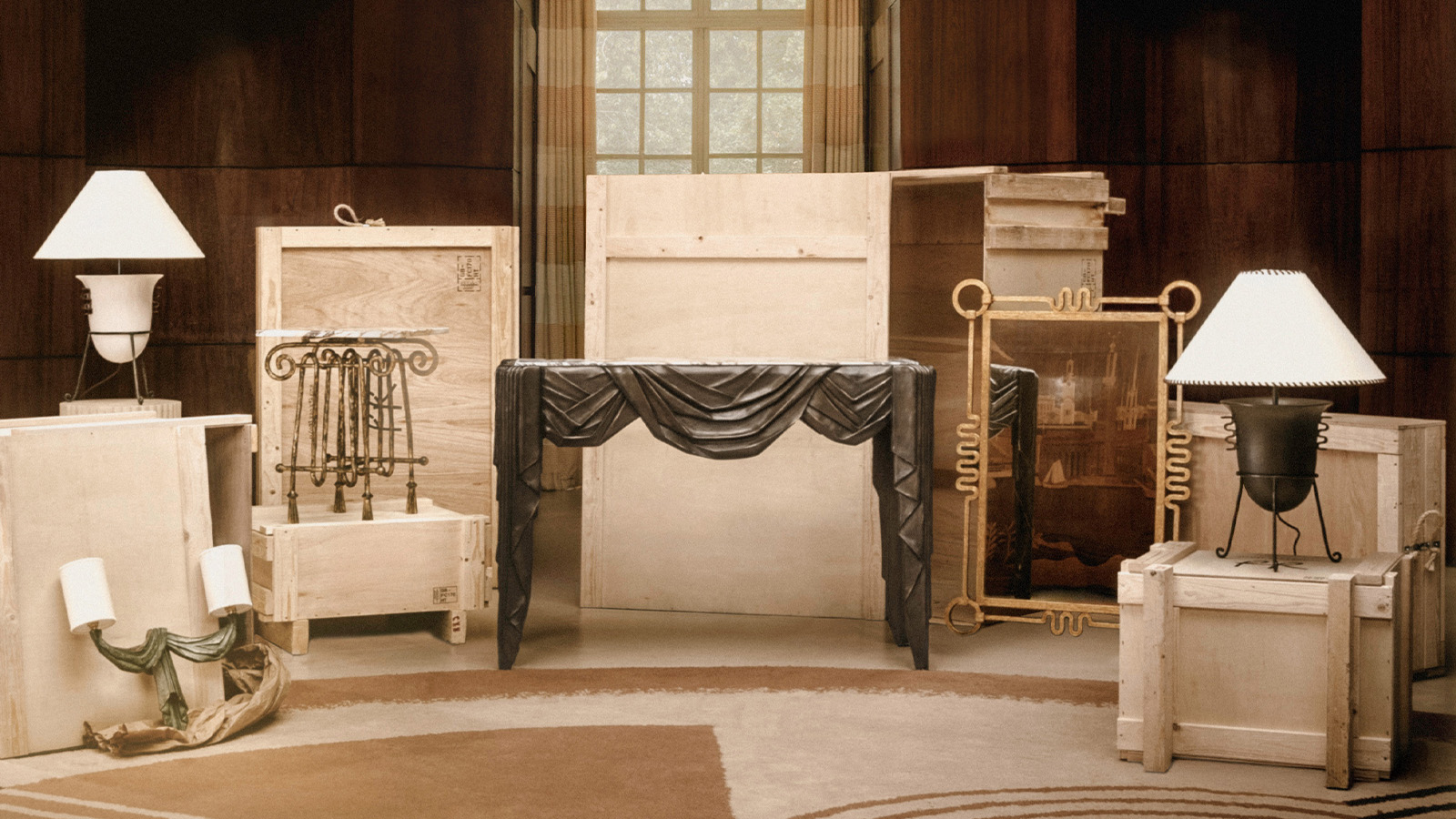 Gergei Erdei’s furniture collection with Porta Romana is inspired by treasured family heirlooms
Gergei Erdei’s furniture collection with Porta Romana is inspired by treasured family heirloomsWorking closely with the British furniture and lighting company, artist and designer Gergei Erdei drew inspiration from his grandmother’s jewellery box to create a furniture collection which has an air of antiqueness
-
 Frank Lloyd Wright’s Fountainhead will be opened to the public for the first time
Frank Lloyd Wright’s Fountainhead will be opened to the public for the first timeThe home, a defining example of the architect’s vision for American design, has been acquired by the Mississippi Museum of Art, which will open it to the public, giving visitors the chance to experience Frank Lloyd Wright’s genius firsthand
-
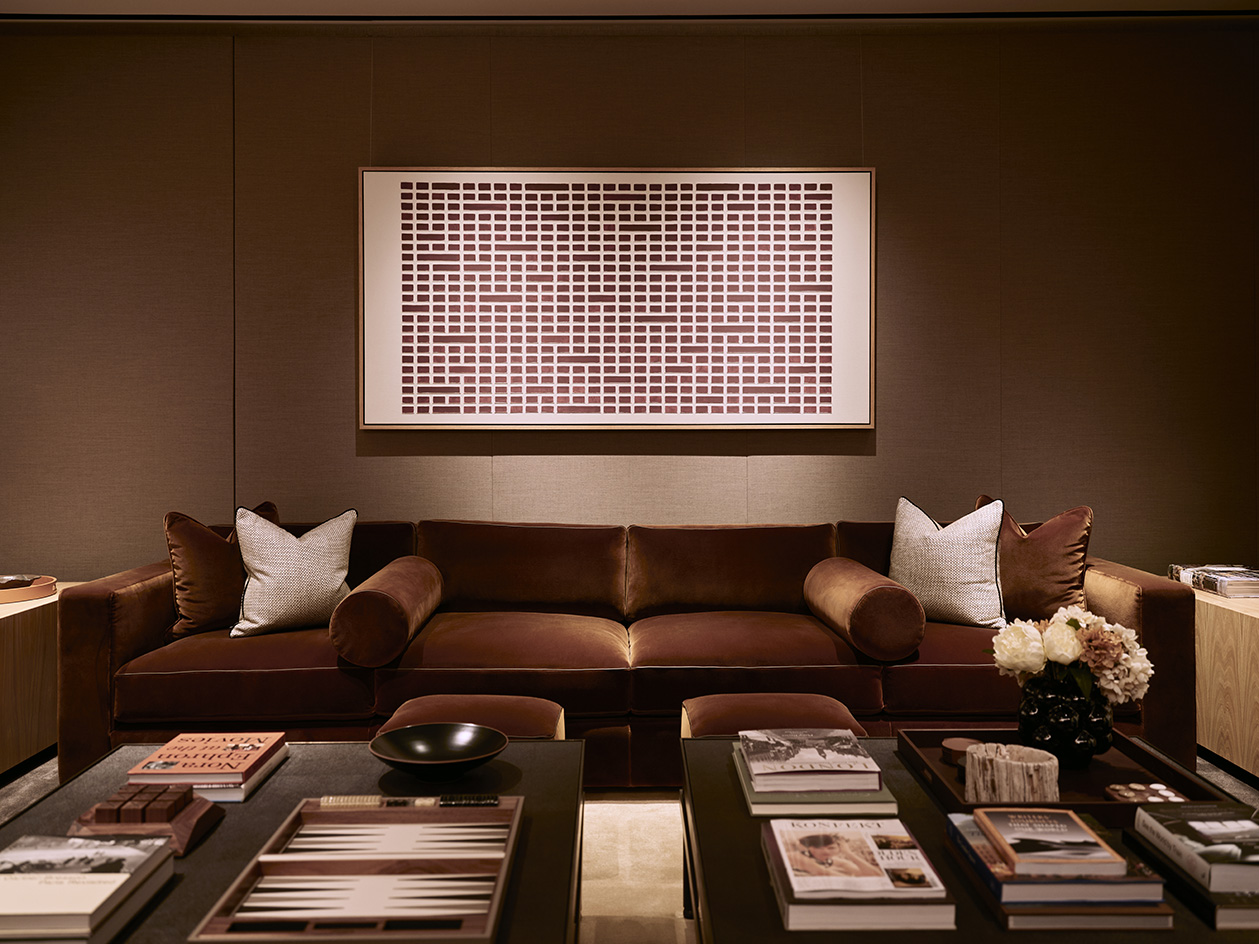 100 George Street is the new kid on the block in fashionable Marylebone
100 George Street is the new kid on the block in fashionable MaryleboneLondon's newest luxury apartment building brings together a sensitive exterior and thoughtful, 21st-century interiors
-
 Take a tour of Retrofit House, the live showcase inspiring sustainable homebuilding
Take a tour of Retrofit House, the live showcase inspiring sustainable homebuildingRetrofit House, a showcase for residential redesign using biomaterials and environmentally smart methods, opens in Birmingham, UK, spearheaded by Civic Square, Dark Matter Labs and Material Cultures; we paid it a visit
-
 How Maggie’s is redefining cancer care through gardens designed for healing, soothing and liberating
How Maggie’s is redefining cancer care through gardens designed for healing, soothing and liberatingCancer support charity Maggie’s has worked with some of garden design’s most celebrated figures; as it turns 30 next year, advancing upon its goal of ‘30 centres by 30’, we look at the integral role Maggie’s gardens play in nurturing and supporting its users
-
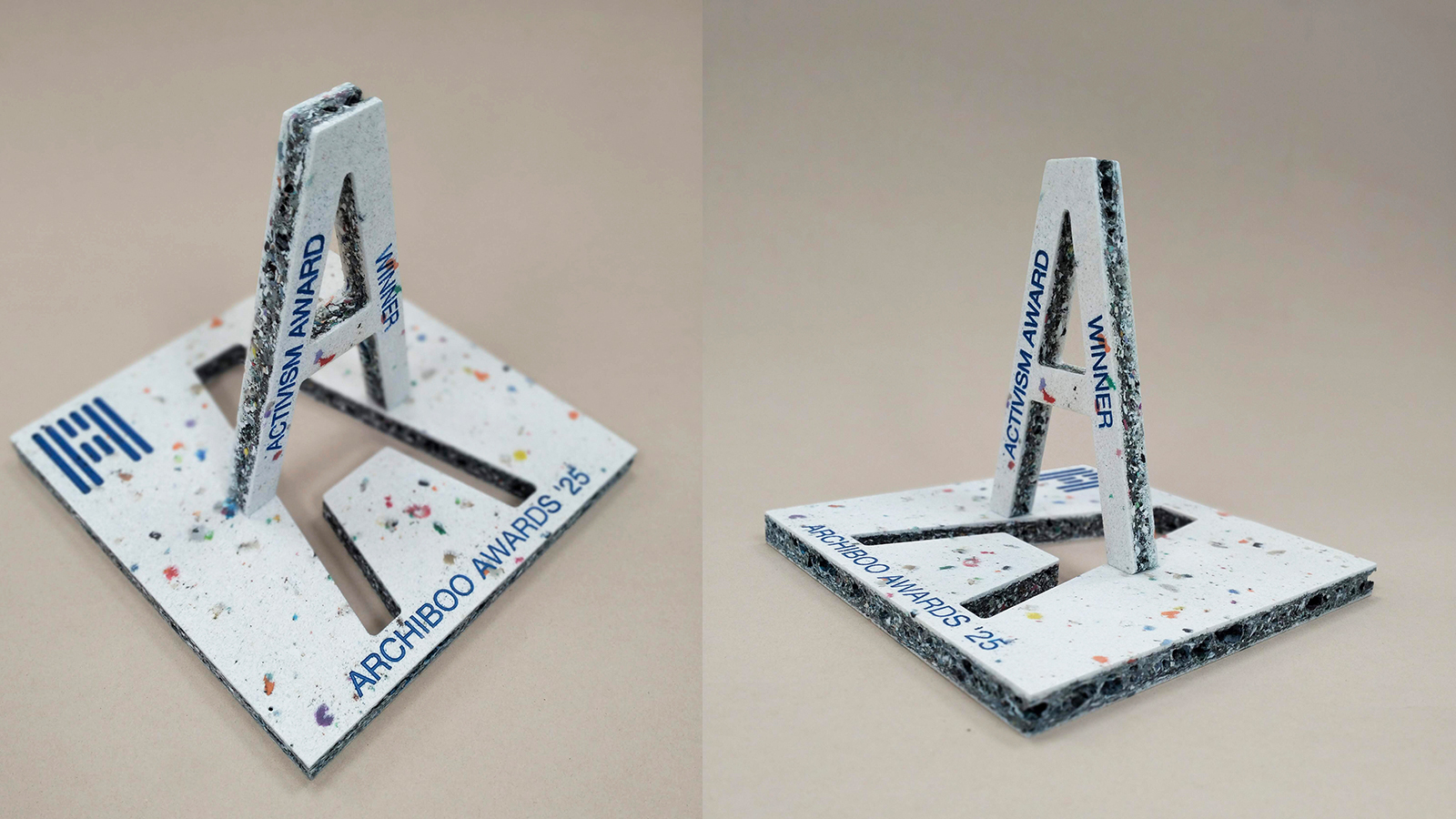 Archiboo Awards 2025 revealed, including prizes for architecture activism and use of AI
Archiboo Awards 2025 revealed, including prizes for architecture activism and use of AIArchiboo Awards 2025 are announced, highlighting Narrative Practice as winners of the Activism in architecture category this year, among several other accolades
-
 Backstage at the Old Vic is all about light, theatre and sustainable action
Backstage at the Old Vic is all about light, theatre and sustainable actionThe theatre's new creative hub by Haworth Tompkins has completed, bringing a distinctly contemporary and colourful addition to the popular theatre space in South London
-
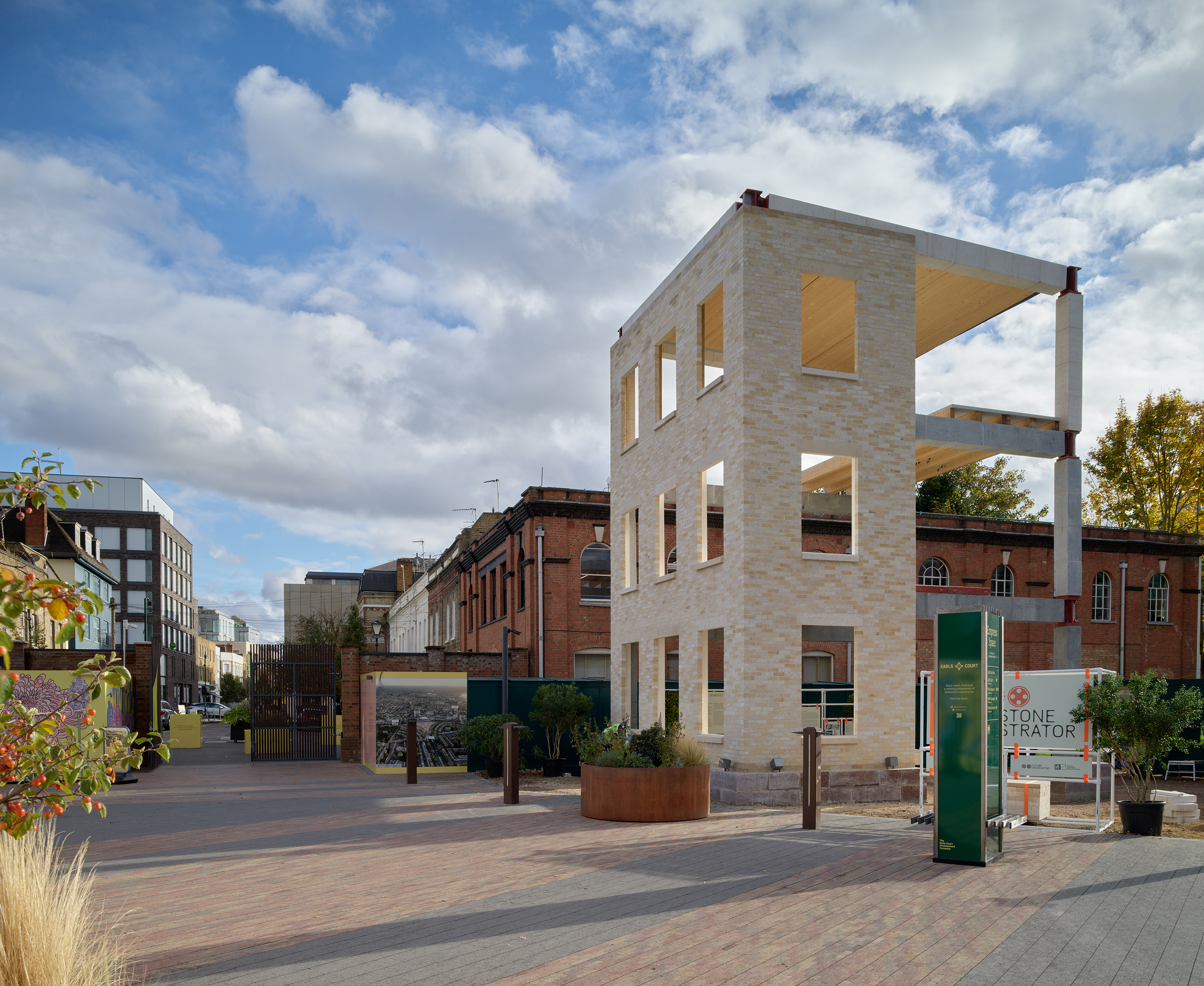 Tempted to try building with stone? This project will convince you of its merits
Tempted to try building with stone? This project will convince you of its meritsWelcome to the Future Observatory's The Stone Demonstrator, a project conceived to show off the material's strong points, now on display in West London
-
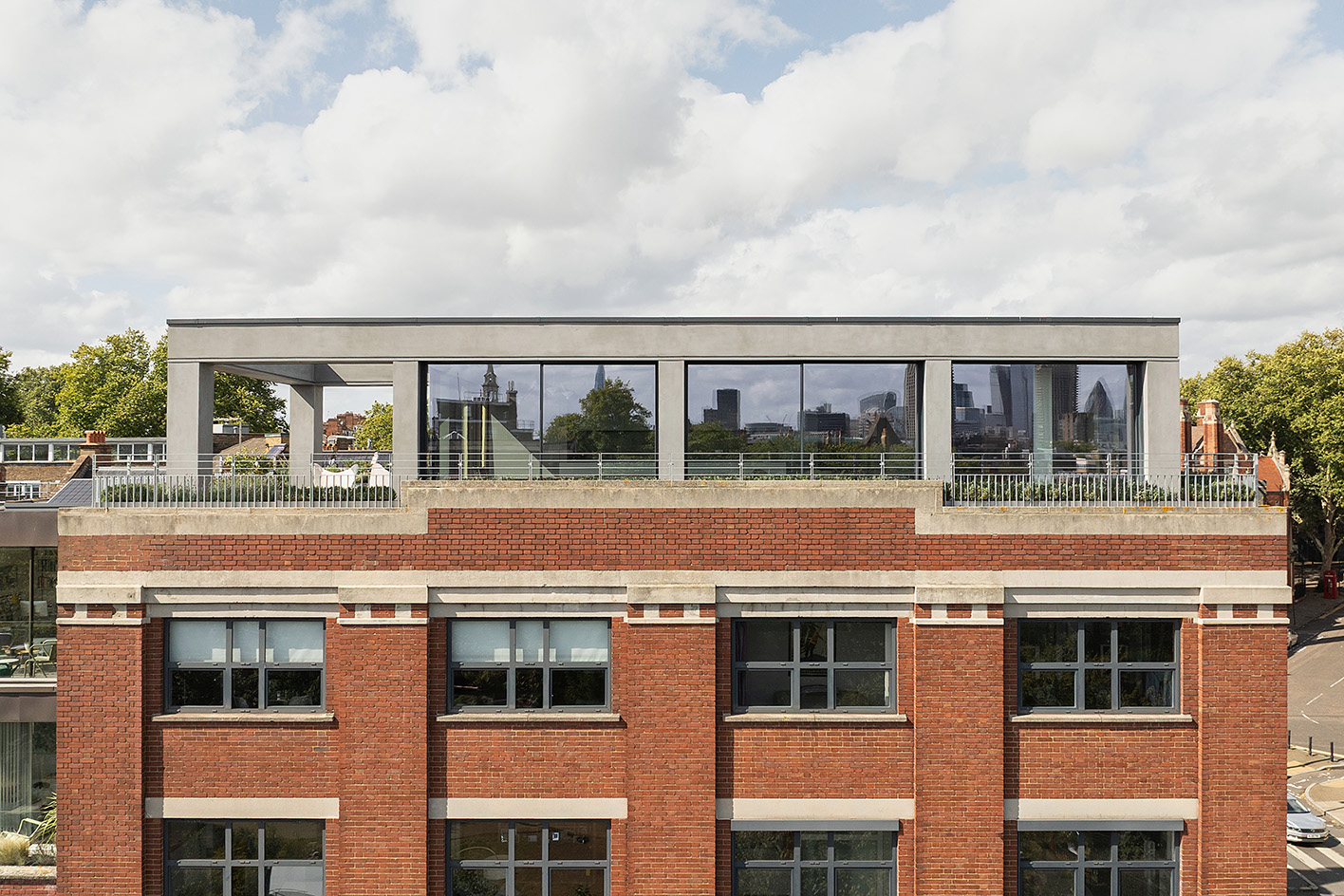 Step inside this Clerkenwell Rooftop, transformed into a minimalist urban abode
Step inside this Clerkenwell Rooftop, transformed into a minimalist urban abodeA Clerkenwell Rooftop has been transformed by Studio Felicity Bell into a minimalist modern home, featuring airy interiors and long views of London
-
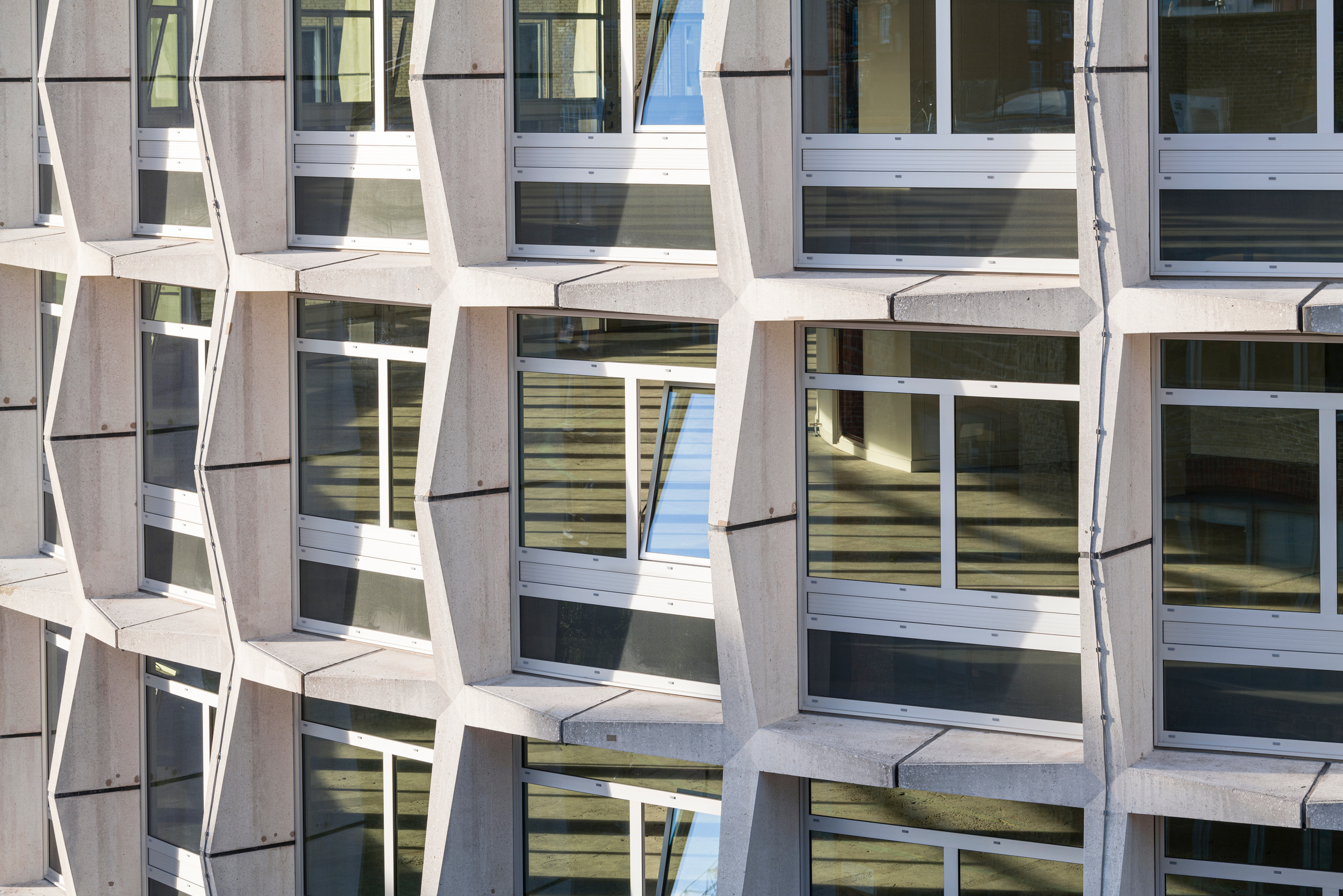 Richard Seifert's London: 'Urban, modern and bombastically brutalist'
Richard Seifert's London: 'Urban, modern and bombastically brutalist'London is full of Richard Seifert buildings, sprinkled with the 20th-century architect's magic and uncompromising style; here, we explore his prolific and, at times, controversial career